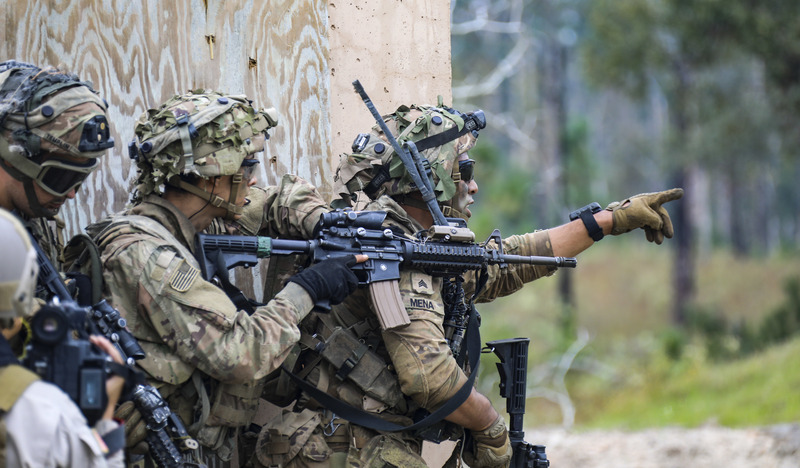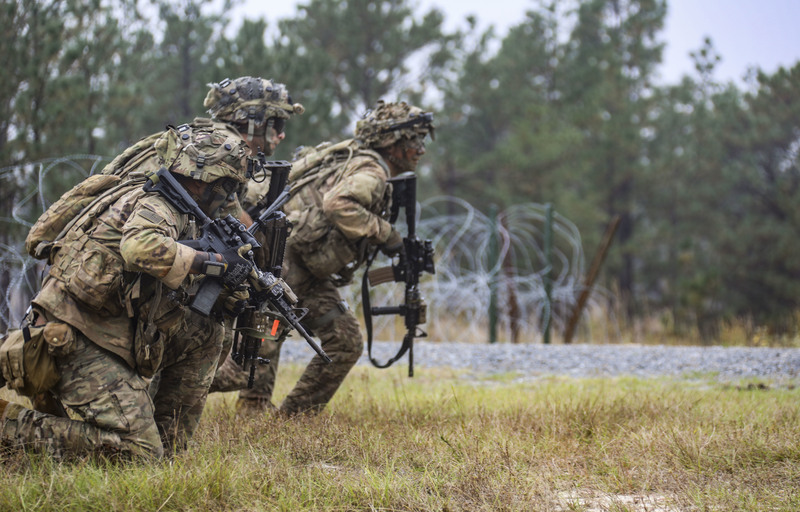
Photo by Sgt. Thomas Calvert, 2nd BCT, 25th ID.
January 8th, 2025
Different units have different relationships between their fire supports and their maneuver elements. On one end of the spectrum are units such as the 75th Ranger Regiment, where platoon forward observers fall in with their infantry platoons, day in, day out. At the other end of the spectrum is the 82nd Airborne Division Artillery, where all FISTers are consolidated at the headquarters and headquarters battery. The merits and difficulties of both arrangements can be debated, but in this article I want to discuss benefits of being with your maneuver in the field as much as possible.

Photo by Sgt. Thomas Calvert, 2nd BCT, 25th ID.
Many FOs didn’t grow up hunting, camping, or sneaking around the woods. For many, this skill has to be learned in the service. Moving effectively through brush, forest, wetlands, and other terrain takes practice. Backing your vehicle up to the OP doesn’t give you training with moving in the woods. The more you can be with your infantry, practicing this skill, the better you’ll get. In addition to the hours spent doing the task, you get the immediate feedback from your unit. Many times the attachments that don’t often come to the field will be tromping around like elephants through the brush at JRTC.
Any chance you have to train with your platoon, take it. Even if the platoon is going out to do squad lanes, try to get out with them. It’s important to recognize the way FM 7-8 manifests in the field. Keeping distance when in a wedge, reacting to contact in a way that doesn’t make your PL trip over you, or knowing when to be still and quiet.
As an example on that last point, I’ll share a personal example from my time as a platoon FO with A Co, 2-504 PIR. At the time, the Army had a shortage of E-5 13F personnel. As a result, our FIST platoon (we were a platoon within an artillery battery) had a lot of PFC FOs - including me. It was maybe my second or third time out with the platoon. We were doing platoon movement to contact. Along the way, a halt was called and everyone took a knee and faced out. After a few moments, the platoon sergeant removed his helmet and looked around. I sat on my rear and popped my helmet off too - that thing was hot! My platoon sergeant asked me a question.
PSgt: “Hey Dahlgren, what do you think we’re doing right now?”
Me: “Uh… taking a break, sergeant?”
PSgt: “We’re doing SLLS. Stop, look, listen, smell. Be quiet and listen for sounds.”
This moment underscored the importance of situation awareness and the role of FOs in interpreting and responding to tactical cues. As an FO, you also need to know where to go during operations. Would your best vantage point be at the support by fire position with the guns? Would you better wield your fires assets moving with the assault element? It’s hard to make these suggestions if you’re not familiar with the battle drills.

Photo by Sgt. Thomas Calvert, 2nd BCT, 25th ID.
Making the assertion that you should not be with the support by fire for this operation but should instead go with the assault element isn’t your decision. The platoon leader needs to agree to it. If you want to have freedom and self-direction, you need to build a basis of trust.
It can be tempting for the platoon leader to take over control of the air assets if their FO is a novice, or an unknown to them. As the FO, you are the biggest force multiplier in the platoon. You can rain down hell on the enemy from any number of munitions. To do that when it really matters, you need your PL to know you and to trust you.
Without trust, you’ll find the fires aspect of mission planning is thin. You’ll find you don’t get to keep control of the AH-64s when they come on station. You’ll never get to talk to the fast movers. Get out there with the platoon and build trust through spending time together and demonstrating your proficiency.
Stay plugged in to your maneuver element’s training calendar, if you’re not living with them day-to-day. Make every effort to get out with them on their training cycles. This can be tricky as the artillery may be going through their training at the same time and they’ll need FOs on the OP.